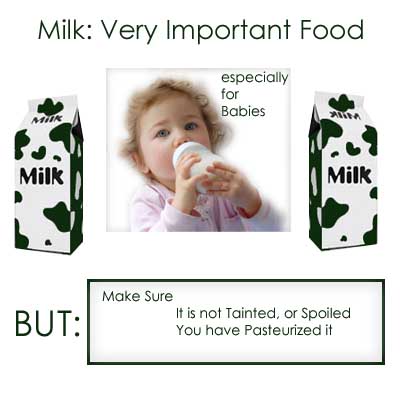Milk: Dietary Facts, Risks and Milk Disease Prevention
Milk and milk products provide a great deal of Health benefits.
Milk: What it contains & why it is important?
Milk is an interesting food of enormous value as it contains in itself all three of the great classes of food-stuffs, i.e. Protein, Carbohydrates, and Fats.
- The Protein present in milk is called Casein, which forms the bulk of curds; which, when dried and salted, is known as cheese.
- The Fat is present in form of tiny globules, which are responsible for the White color of the Milk. When milk is allowed to stand, these globules of fat, because of their light weight, float up to the top and form a layer called cream.
When this cream is skimmed off and put into a churn, and beaten violently so as to break the film coating on these globules, they run together and form a yellow mass which we call butter.
- The third component i.e. Carbohydrates. Milk contains this in the form of sugar, called milk-sugar (lactose), which gives it its sweetish taste. Apart from this milk also contains another starch-like body, or animal starch, which is present in Casein.
All these substances, of course, in milk are dissolved in a large amount of water. That is why, when milk is evaporated, or dried, it shrinks down to just one-sixth of its previous volume.
“Milk is, in fact, A Liquid Meat, Carbohydrates, and Fat in one; and that is why babies are able to live and thrive on it alone for their first six months”
Milk is also a very valuable food for older children. But it is not “strong” enough, thus needs to be combined with other solid foods.
Risks of Tainted Milk:
The risks from tainting or spoiling are particularly great in the case of milk. Improper handling, unclean barns and sheds are the main causes for this. Secondly, the same delicateness which makes it so easily digestible for babies, makes it equally easy for germs and bacteria to grow in it and spoil, or sour, it. A very large percentage of the illnesses of babies and young children, particularly the problems of stomach and bowels, which are so common in hot weather, are due to the use of spoiled or tainted milk. Other risks include diseases such as Listeriosis, Typhoid Fever, Tuberculosis, Diphtheria, and Brucellosis.
The Preventive measures:
- Absolute cleanliness: There is one sure prevention from all these dangers, and that is Absolute Cleanliness from cows to consumers.
- Do not take Raw Milk, Pasteurize it before taking: Raw milk can harbor dangerous microorganisms that can result serious health risks.
USFDA (US Foods and Drug Administration) says:
“According to an analysis by the Centers for Disease Control and Prevention (CDC), between 1993 and 2006 more than 1500 people in the United States became sick from drinking raw milk or eating cheese made from raw milk. In addition, CDC reported that unpasteurized milk is 150 times more likely to cause food borne illness and results in 13 times more hospitalizations than illnesses involving pasteurized dairy products.”
Pasteurization is a process of heating milk to a specific temperature for a set period of time that kills these disease generating harmful bacteria. Pasteurization kills harmful germs responsible for mentioned diseases such as Listeriosis, Typhoid Fever, Tuberculosis, Diphtheria, and Brucellosis.
- Keep the Milk cool: The disease germs grow and flourish as easily as in hot environment as compare to cold environment.
It is very important to have the quality and purity of the milk tested just before it goes to the consumer; but far more important that it should be examined by State Inspectors at the dairy farms.




Share the Post